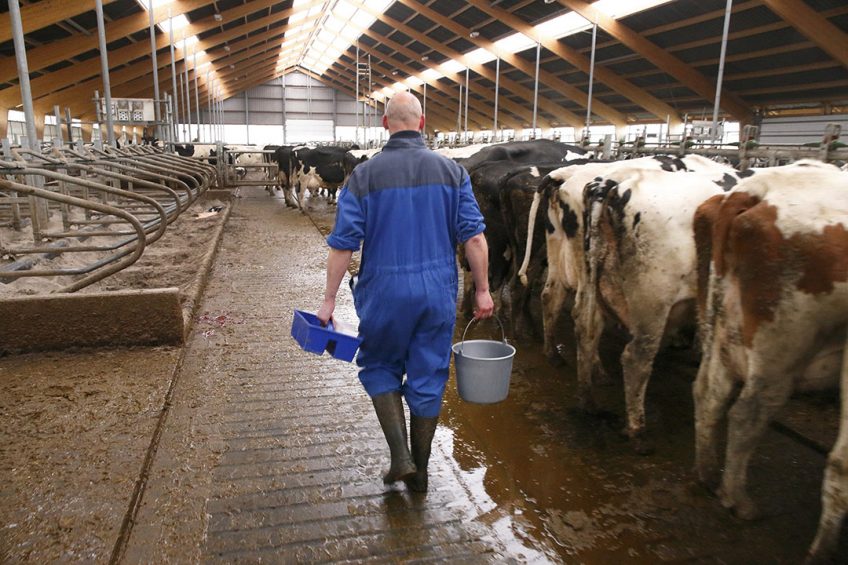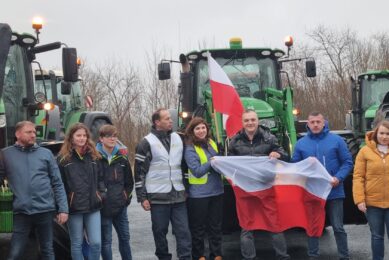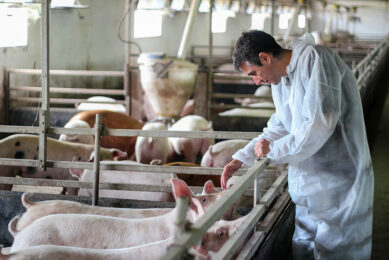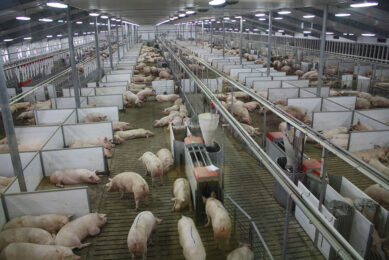Reducing antibiotics: What do farmers say?

The way a farmer manages the actual use of antibiotics on their farm does not reflect solely that farmer as an individual. Rather, practices and reasoning’s are guided by other contexts such as legislation and peer pressure. A qualitative study of Swedish dairy farmers aimed to find out farmer’s actual perspectives on antibiotic use.
A significant share of antibiotic use today is in animal husbandry, and two-thirds of the predicted growth in antibiotic use globally is in this sector. Much research has recently been directed at farmer behaviour with regard to antibiotic use, with the purpose of better aligning actual use with medical recommendations. A recent qualitative study sought to improve understanding of the wider situation shaping farmers’ practices in relation to antibiotics in dairy farming. Is farmer behaviour socially and culturally shaped? Is what farmers say and do not only influenced by what other farmers think but also fundamentally steered by the political and economic context in which they live?
10 farms were selected for the purpose of an exploratory and empirically driven study on how Swedish dairy farmers reason around antibiotic use and resistance in relation to their farm practice and wider situation. The farms were selected to reflect the variation in conditions for dairy farming in Sweden regarding geographical spread and ecological and socioeconomic circumstances. The family farms, located in a variety of geographical settings, had at the time of visit between 50 and 150 milking cows.
Animal disease and antibiotic use
In Sweden, it has been forbidden to use antibiotics for disease prevention or as growth promoters since 1986, and antibiotics are only allowed for therapeutic use when needed and under veterinary consultation. Although specific figures for dairy cows are unavailable, looking at overall antibiotic use in animal husbandry, Sweden has the lowest use of antibiotics of all European Union (EU) member countries, with just above 10% of the average level used in the EU.
The farmers in the study were well aware that they face stronger limitations on antibiotic use than farmers in other countries. None of the farmers talked about this as a problem for animal health and welfare or for their overall ability to treat sick animals, but they felt that it was yet another dimension of how they were financially disadvantaged in the globalised food market.
The most common health condition in Swedish dairy cows, and that causing the most significant productivity losses, is mastitis (udder inflammation). The underlying reason for mastitis can differ but is often bacteriological. During the lactation period, the recommendation is that only more severe inflammations are treated with antibiotics, whereas subclinical mastitis may be treated by having the affected quarter(s) dried off. Overall, the farmers appeared knowledgeable about how to prevent and treat common diseases. For example, when the cow was not clearly ill with mastitis, the farmers generally tried other measures than antibiotic treatment (e.g., they milked the cow more frequently or dried off 1 quarter). Whether and how to treat was also an economic question and depended on factors such as stage of lactation and overall productivity.

All the farmers in the study reported that they used antibiotics only when recommended by the veterinarian and when there is no good alternative. Antibiotics are most frequently used for clinical acute mastitis or as dry-cow therapy, and then only on cows with subclinical mastitis. Otherwise, the farmers mentioned that they used antibiotics for milk fever, metritis, pneumonia, wounds, foot rot, and bacterial infections following from rotavirus infection. The farmers admitted that they perhaps could make more effort to limit antibiotic use for mastitis. Blanket therapy during dry-off was also reported as having occasionally been the practice suggested by the veterinarian. A farmer who is now very restrictive with using Siccalactin (an antibiotic) for dry-cow therapy described how she previously used it routinely as suggested by her veterinarian.
We have to have some kind of big brother in Sweden and we have to have really strict regulations. And I have no problem with them. I think the animal welfare laws in Sweden are excellent. But then we damn well shouldn’t import stuff either. What’s the antibiotic resistance percentage of pork from Germany?” – a farmer from the study.
Although it is not allowed, 2 of the farmers admitted having some antibiotics at home. One of these farmers mentioned that he had a deal with the veterinarian to have quick access to antibiotics for acute cases during the weekend. The other indirectly indicated that small-scale hoarding of antibiotics is sanctioned by the veterinarian. During, and for some time after cows are treated with antibiotics, the milk cannot be delivered to the dairy for the sake of avoiding production damage (because antibiotic residues kill, e.g., yogurt culture) and avoiding antibiotic residues in marketed milk products. There is no general recommendation about not giving this milk to calves, but recent research indicates the risk of developing antibiotic resistance when calves are fed milk containing antibiotic residues.
Beyond the farm
When asked about their thoughts on the wider politics, regulation, and media debates on farming and antibiotic resistance, all the farmers expressed significant frustration. All were generally unhappy about how their production is portrayed in the media and, they felt a lack of appreciation from the wider society of their work. They mentioned double standards among consumers in general with regard to environmental and animal health concerns: “They eat apples in the big cities and travel to Thailand twice a year. Of course you’re disappointed,” said one farmer in the study. They also mentioned double standards inherent in the Swedish politics and regulation on agriculture and antibiotic use: “We have to have some kind of big brother in Sweden and we have to have really strict regulations. And I have no problem with them. I think the animal welfare laws in Sweden are excellent. But then we damn well shouldn’t import stuff either. What’s the antibiotic resistance percentage of pork from Germany?” expressed another farmer.
Interestingly, the farmers interviewed did not justify antibiotic use by its importance from an animal health and welfare perspective, which has been found in studies in other countries. For example, a study found that Dutch and German farmers saw society as unfairly viewing them as using too much antibiotics, not understanding that this was essential for animal health and welfare.
In the present study, the Swedish farmers rather expressed that antibiotics were used when there was no other alternative or sometimes as a result of lack of time spent on preventive or curative measures, which was justified by labour constraints. Moreover, there were no indications in the interviews that the farmers felt that they lacked access to the antibiotics they needed for their animals. They seemed to agree with the high animal health and welfare standards and the comparatively strict antibiotic use restrictions and did not express a need for more antibiotics than they had access too.
Cultural shaping of attitudes
The findings thus suggest that Swedish farmers’ attitudes and behaviour of antibiotic use have over time been shaped by the stricter regulations in Sweden, pointing out that structural changes can be important for behavioural change. Overall, the farmers trusted their veterinarians, and it appears to be veterinary advice with regard to antibiotic prescription and recommendations, rather than farmers’ practices, that determines antibiotic usage in Sweden.
The study concluded that structural limitations faced by farmers, rather than lack of information, impose constraints to further limiting antibiotic use in Sweden. Overall stricter and more uniform global regulations on antibiotic use in animal farming could be an effective measure for reducing antibiotic use.
This is an edited and approved version of the research paper, ‘Dairy farmers’ perspectives on antibiotic use: A qualitative study’, published in the Journal of Dairy Science.
 Beheer
Beheer





 WP Admin
WP Admin  Bewerk bericht
Bewerk bericht